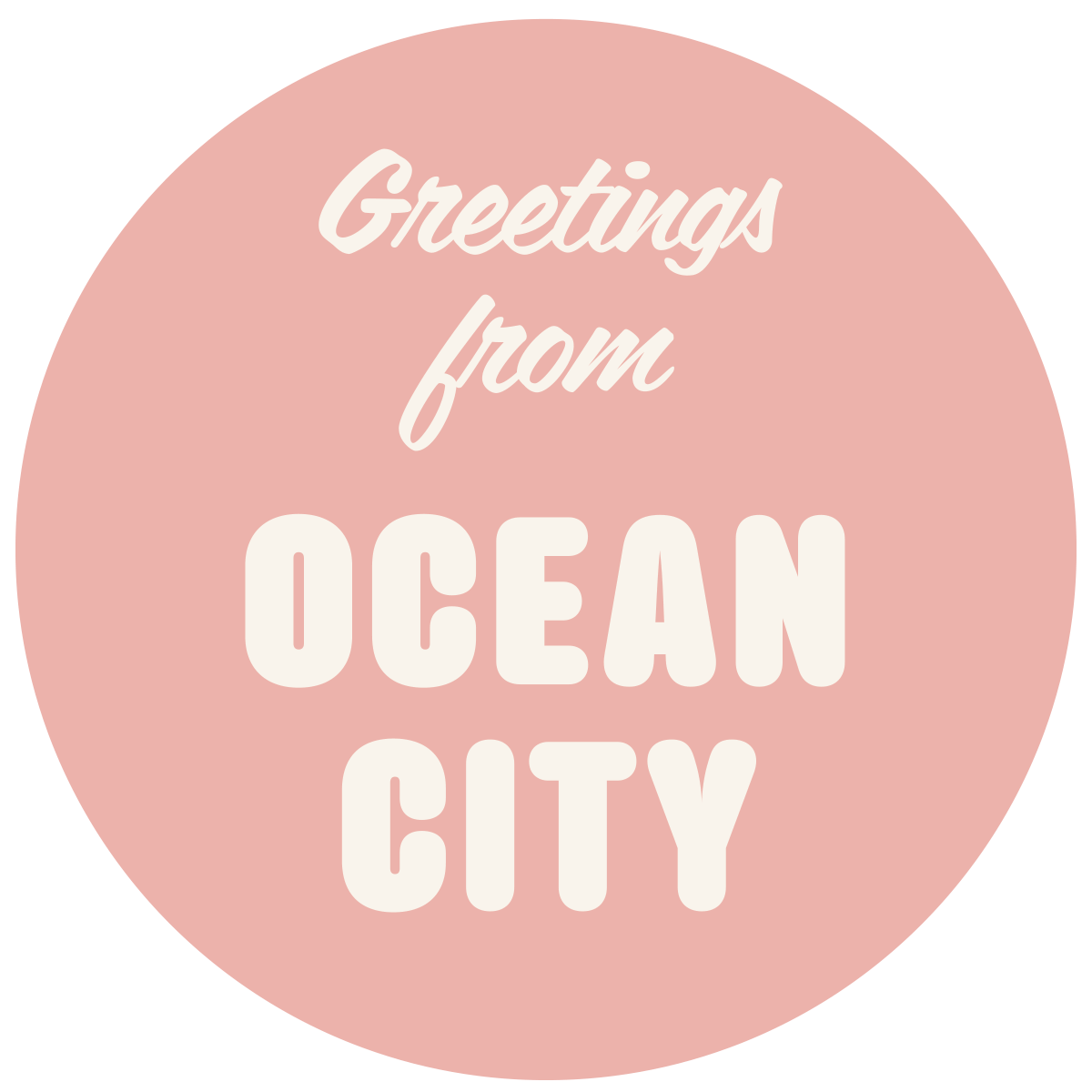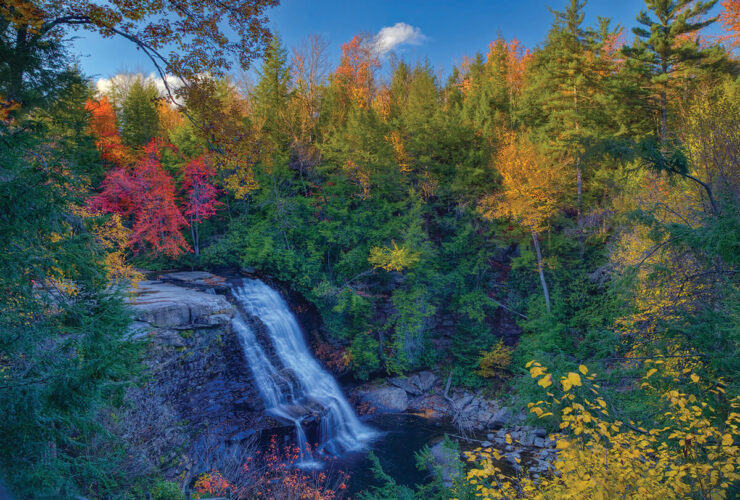
Travel & Outdoor
Greetings from Ocean City: Water World
From the bay to the sea, Ocean City is just a few blocks wide, with water only a stone's throw away from every vantage point, and infinite ways to experience it.

By Lydia Woolever

Move over, Maui—our Maryland beach town is a hidden gem for hanging ten.
TIDAL TUNES
Songs for the sun.
It was only a few years after The Beach Boys and Endless Summer that a 10-year-old Lee Gerachis started surfing in Ocean City. “We get overlooked for other places, but when it’s good, it’s very good here,” says the 64-year-old D.C. native, with shaggy hair and a permanent tan.
In the late 1960s, the sport was still regional and niche, largely relegated to the big waves of California and Hawaii that East Coast kids could only dream about. But Gerachis spent most of his summers right on the beach, living in a white cottage with a wraparound porch on Eighth Street, often paddling out from right there, or across the Inlet to “the wedge” at the top of Assateague.
These days, that same building is now home to his own Malibu’s Surf Shop—an O.C. institution since 1986—where walls are decked with custom-made boards, and every day, a webcam livestreams the surf conditions. “Storm days are fun, especially when you’re younger,” says Gerachis, pointing especially to the swells of nor’easters. “But what everybody loves are those glassy, sparkly, warm summer days, when the water is 70 degrees and they’re just peeling, chest-high waves. A lot of the fun is just being out there with your friends.”
WAVES RAVES
CITY SURF SPOT: The Inlet
COUNTY SURF SPOT: Assateague Island
SURF SHOP: Malibu’s
SURF REPORT: 98.1 FM WOCM
SURF LESSONS: K-Coast
CUSTOM-MADE BOARDS: Ashton Surf Designs
DING REPAIR: Chauncey’s
SURF RENTALS: All the aforementioned surf shops!

Courtesy of NABB RESEARCH CENTER, SALISBURY UNIVERSITY.
101
CATCHING WAVES
Tips and tricks for beginning surfers.
-
Mind the hours.
During peak season, surfing is allowed beach-wide before 10 a.m. or after 5:30 p.m. When the guards are on stands, head to the two designated “surf areas,” which rotate throughout the season. The inlet is well-known and open every weekday. -
Find your spot.
The best sandbars are always changing with Mother Nature (and the city’s beach replenishment program). Look for cleaner surf conditions—aka less choppy—with offshore, westward winds, and head south, as sand banks up north can make it difficult to find a nice wave. Serious surfers hold their best streets close to chest. -
Feast or famine.
Surf conditions are influenced by a confluence of factors, from wind and weather to geography and topography. In the Mid-Atlantic, a wider continental shelf and sandy ocean floor yields shorter, faster-breaking waves than the West Coast. But patience is a virtue—as storms head up from the south, superior swells often emerge.
Day in the Life
On Guard
Suited in red and slathered in sunscreen, the local beach patrol is a local lifesaver.

From his first trips to Ocean City in the late 1960s, Butch Arbin knew that he wanted to be a lifeguard. Every summer, his family would load up the station wagon in Baltimore County, drive across the then-single span of the Bay Bridge, and spend a few days at the beach, where those strapping young sentinels seemed impossibly cool. At 15, he signed up for tryouts and was on the stand the next day—the start of a part-time career that’s still going strong, 52 years later. But even after all that time, “Not much has changed,” says Arbin, now 67 and captain of the Ocean City Beach Patrol. “Except now a guard will make more by lunchtime than I used to in an entire week.”

Ocean City Beach Patrol, circa 1974, with Arbin pictured bottom center. Courtesy of Butch Arbin.
In 1973, that meant $12.50—just enough for rent at a rooming house downtown, plus two slices of Lombardi’s pizza and a medium Coke for dinner. At the time, there were 112 of those white, wooden guard stands, compared to 91 today. Their rescue buoys were steel, not plastic, and the job interview was little more than a quick dip in the ocean and a few sprints down the beach—a far cry from the extensive test now held at the Arundel Olympic Swim Center in Annapolis each spring. “And there were no women,” says Arbin. “It was kind of a good ol’ boys club.”
Today, thought, there are plenty of female lifeguards, and Memorial Day Saturday through Labor Day Sunday, 10 a.m. to 5:30 p.m. seven days a week, they all use the same time-tested systems—for watching the water, scanning the beach, alerting the crowds via flags and whistles, handling lost-and-found persons—not to mention first-aid and CPR skills, plus basic oceanography. Riptides remain a perennial issue in this region, but now, they have two-way radios and all-terrain vehicles, which make things easier and have more than likely saved a few lives. They perform upward of 4,000 rescues each year. “But they’re more than lifeguards,” says Arbin, himself a certified EMT. “I’d say 95 percent of the time, they’re ambassadors, telling people a good place to get steamed crabs.”
“[Much] of the time, they’re ambassadors, telling people a good place to get crabs.”
For better or worse, the patrol also enforces the rules—no smoking, alcohol, campfires, loud music, or pets. And that sort of supervision is something Arbin practices in the off-season, too. From fall through spring, he is a middle- and high-school science teacher in Southern Maryland.
So did he go into education for the summers off? “Yes,” he says with a chuckle. “The three best reasons to teach are June, July, and August.”


IT’S HARD TO IMAGINE TODAY, what with all the high-rise hotels and twinkling traffic lights, but the Delmarva Peninsula, and with it the barrier island of Ocean City, is essentially nothing more than an ancient sandbar, created over the millennia through ice ages and global warming, ebbing and flowing in shape and size with the whims of Mother Nature. And historically, as coastal storms have battered the beaches here, they chip away at the grassy dunes, which hold the whole thing together. Enter the Army Corps of Engineers, who have been overseeing multimillion-dollar “replenishment” projects, which add hundreds of thousands of cubic yards of fresh sand to the seashore, widening its promenade and aiming to protect this spit of land for time to come. Go ahead, dip your toes into the strand, using a few of these pointers.
Head Uptown.
A general rule: The farther north you go, the quieter the streets, and in turn the beaches, become in Ocean City. We personally like those in the hundreds, where the hubbub of the boardwalk becomes a faint memory, and on a good day, even free street parking is often available. Some hotels and condominiums have private beach access, but for the most part, every block up to Fenwick has its own public entryway, including two dozen that are wheelchair-accessible.
Arrive Early.
As the saying goes, early birds get the best beach chair. Stake out your spot as soon as possible, especially in prime season. Lifeguards arrive in their stands at 10 a.m., but in the hours before that, you can swim, surf, or fish at your own risk. Bring your own umbrella. Pack a picnic. Build a sandcastle. Finish that book. Make a day of it. Then be sure to take your trash home with you, whatever hour you finally leave.



Treat Yourself To A Rental.
Nobody likes hauling their stuff to the beach, and so luckily, there are a several local businesses that help you kick back in the lap of luxury, with rental options for umbrellas, chairs, cabanas, even boogie boards—set-up included—on both a daily and weekly basis. A handful of hotels also offer this pampered service for guests. At The Castle In the Sand Hotel on 38th Street, it’s open to the public as well, where, best of all, you can order food and drink from their Coconuts beach bar right to your seat.
Boogie On Down.
Surfing isn’t the only way to get out on a board at the O.C. beach. Whether you call it a boogie or a body board, this small, lightweight foam flotation device is a summertime staple for the East Coast’s mid-size waves. Rental options abound, and for two days each in July and August, the local beach patrol, along with Endless Summer Surf Shop on 38th Street, co-host summer camps for kids eight and up to perfect their moves.
Go Ahead, Get Scopes.
You know those supertan teenagers who run down the beach with a messenger bag and professional camera throughout the summer? We must admit, we still have a few of the keychains they sell for Telescope—simply known as “Scopes” back in our day. It might seem cheesy, but in the age of instant-gratification cell-phone photographs, the sentimental surprise of these pocket- sized pictures might be worth the momentary embarrassment of posing in front of the rest of the beach. Trust us: Years later, you’ll be glad you did.
WATER WAYS
DIY FISH: Inlet Jetty
CLAM: Assateague Outfitters
KAYAK: Ayers Creek Adventures
SAIL: Alyosha Charters
PADDLEBOARD: 67th Street Paddle Cove
BYO BOAT: P64th Street Public Ramp
OUTDOOR EDUCATION: Maryland Coastal Bays
CLEAN STREAMS: Litter Free OC

Q&A
HIGH IN THE SKY
Looking out over the eastern horizon, beachgoers might spot the occasional flock of pelicans, pod of dolphins, and always, a few Super Cub airplanes, hauling big, black-lettered banners in their wakes that read ALL U CAN EAT BUFFET or WILL U MARRY ME. From up there—300 feet in the air, at 30 mph—pilot Chris Bunting has seen it all at the helm of Ocean Aerial Ads in nearby Berlin.
-
How big are those letters?
About four feet wide and six feet tall. They’re just attached with clips. -
Ever lost one?
Oh yeah—you always lose a couple each year. They end up floating around in the bay or stuck in a tree somewhere. -
Do you get many proposal requests?
Whenever they call, we say, “Don’t do it!” One guy actually thanked us the next day, because he proposed [early] and she turned him down, so we offered him a refund. When it does turn out well, it’s neat to see everyone get excited down on the ground. -
Has social media impacted your advertising?
I tell our clients it’s in-your-face advertising. Whether people are on a phone or not, they’re always going to look up when they hear a big noisy banner. It’s hard not to be drawn to a plane in a sky.












